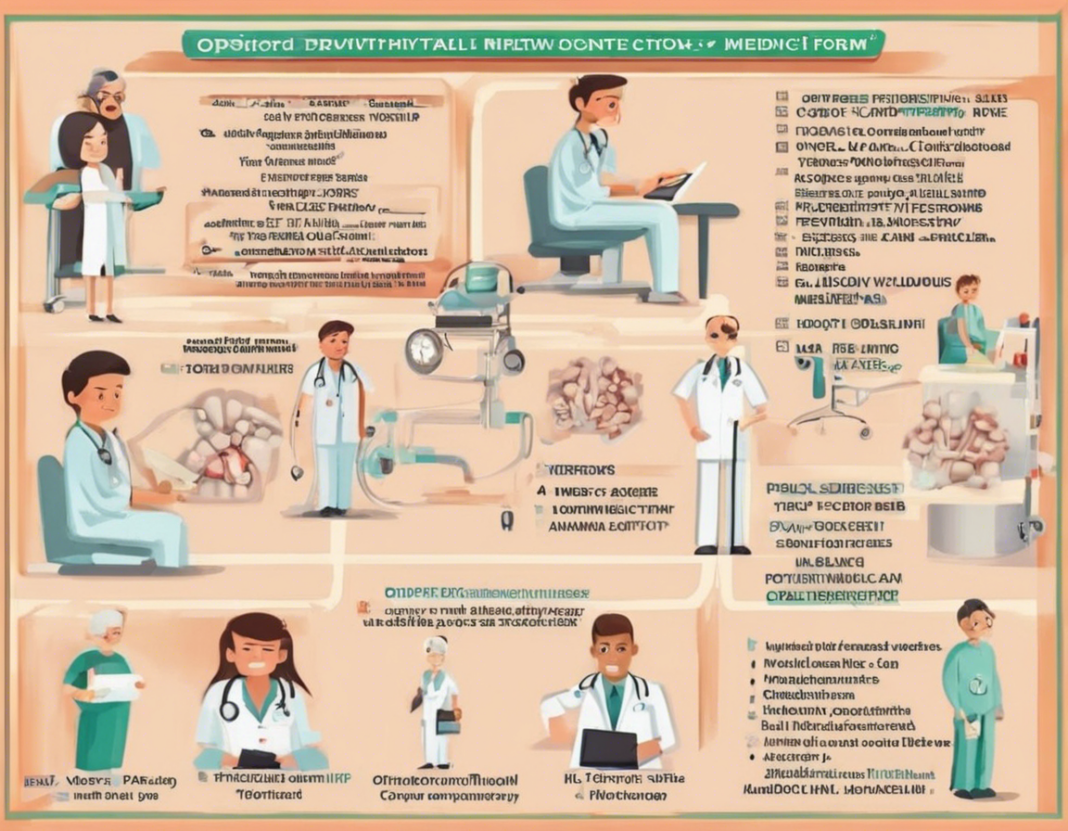Outpatient department (OPD) is a critical component of any medical facility that plays a pivotal role in delivering healthcare services to patients who do not require hospitalization or overnight stay. Understanding the OPD setting is vital for patients, healthcare professionals, and administrators alike. In this comprehensive guide, we will delve deep into the OPD and decode its significance in the healthcare landscape.
What is an OPD?
The OPD is the section of a healthcare facility where patients receive medical consultations, diagnoses, treatment, and interventions on an outpatient basis. This means that patients visit the department, receive medical care, and leave the facility on the same day. OPD services cater to a wide range of medical conditions and specialties, making it an essential part of healthcare delivery.
Components of an OPD
Reception Area
- The first point of contact for patients entering the OPD.
- Registration and appointment scheduling take place here.
Waiting Area
- Patients wait here before their consultation or procedure.
- Usually equipped with seating, reading material, and facilities for comfort.
Consultation Rooms
- Where doctors or specialists examine and diagnose patients.
- Privacy is maintained to facilitate open discussions between patients and healthcare providers.
Diagnostic Services
- Includes laboratories, imaging facilities (X-ray, MRI, CT scan), and other tests for diagnosis.
- Essential for evaluating patients’ health status and planning treatment.
Pharmacy
- Dispenses medications prescribed by healthcare providers.
- Ensures availability and accessibility of medicines for patients.
Importance of OPD in Healthcare
Accessibility
- Provides easy access to medical care for patients with various healthcare needs.
- Eliminates the need for hospitalization for minor conditions or routine follow-ups.
Cost-Effective
- OPD services are generally more affordable than inpatient care.
- Reduces the financial burden on patients and healthcare systems.
Timely Interventions
- Enables early diagnosis and treatment of illnesses.
- Prevents the progression of diseases and improves patient outcomes.
Continuity of Care
- Facilitates continuous monitoring and management of chronic conditions.
- Promotes a holistic approach to patient care by involving primary care physicians and specialists.
OPD Services Offered
- General Medical Consultation
- Specialist Consultations (e.g., Cardiology, Endocrinology, Neurology)
- Diagnostic Tests (Blood tests, X-rays, Ultrasounds)
- Minor Procedures (Wound dressing, Injections)
- Counseling Services (Nutrition, Mental Health)
- Vaccinations and Immunizations
Challenges Faced by OPDs
Patient Overload
- High patient volume can lead to long waiting times and delays in care.
- Strain on healthcare providers to cater to a large number of patients efficiently.
Resource Constraints
- Limited availability of diagnostic equipment and facilities.
- Inadequate staffing and infrastructure may compromise service quality.
Coordination with Inpatient Services
- Ensuring seamless transitions for patients requiring hospitalization.
- Effective communication and collaboration between OPD and inpatient teams are essential.
Follow-Up and Monitoring
- Tracking patients for follow-up visits and treatment adherence.
- Addressing gaps in continuity of care to prevent complications.
Role of Telemedicine in OPD
With advancements in technology, telemedicine has revolutionized OPD services by enabling remote consultations, e-prescriptions, and virtual follow-ups. This innovation has bridged the gap between healthcare providers and patients, particularly in remote areas or during emergencies. Telemedicine enhances access to healthcare services, reduces physical visits to medical facilities, and promotes patient convenience.
Importance of Patient Education in the OPD
Patient education is a crucial aspect of the OPD setting as it empowers individuals to take charge of their health. Healthcare providers play a significant role in educating patients about their conditions, treatment plans, lifestyle modifications, and preventive measures. By enhancing health literacy, patients can make informed decisions, adhere to medical advice, and actively participate in their care.
FAQs about OPD
1. What is the difference between OPD and IPD?
- OPD (Outpatient Department) provides medical services to patients who do not require hospitalization, while IPD (Inpatient Department) caters to patients needing admission for treatment and monitoring.
2. How can I schedule an appointment at the OPD?
- Patients can typically schedule appointments by contacting the healthcare facility’s reception desk via phone, online portals, or in person.
3. Are all medical specialties available in the OPD?
- OPD services cover a wide range of medical specialties, including general medicine, cardiology, dermatology, pediatrics, and more, depending on the facility.
4. Can I get my medications from the OPD pharmacy?
- Yes, patients can obtain prescribed medications from the OPD pharmacy for convenience and immediate access to treatment.
5. Is insurance coverage applicable for OPD consultations?
- Insurance policies may vary, but some plans cover OPD consultations, diagnostic tests, and procedures. It is advisable to check with the insurance provider for specific details.
Conclusion
The OPD plays a pivotal role in providing accessible, cost-effective, and timely healthcare services to individuals across various medical conditions. Understanding the components, services, challenges, and advancements in the OPD setting is crucial for optimizing patient care, promoting health literacy, and enhancing overall healthcare outcomes. By embracing innovations like telemedicine and prioritizing patient education, healthcare facilities can elevate their OPD services to meet the evolving needs of patients in the modern healthcare landscape.






